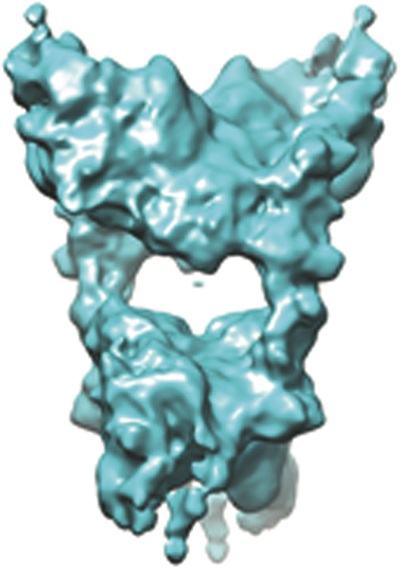
The invention of the electron microscope revolutionized how scientists view small structural details. The technology has undergone considerable evolution and in recent years single-particle cryo-electron microscopy (cryo-EM) has gained importance in structural biology. A topical review on cryo-EM has recently been published in Acta Crystallographica Section F (Vénien-Bryan et al., 2017, Acta Cryst. F73, 174-183). The review discusses the importance of cryo-EM and highlights recent developments. It describes how cryo-EM and other structural biology techniques, especially X-ray crystallography, now complement each other and how cryo-EM has been used in drug discovery.
The synergistic convergence of technological and computational advances now makes cryo-EM a feasible method for determining structures at near-atomic to atomic resolution (~5-2 Å). The latest generation of cryo-electron microscopes are equipped with direct electron detectors and software for the automated collection of images. In combination with the use of advanced image-analysis methods, the performance of this technique has dramatically improved. Less than a decade ago calculating a sub-10 Å resolution structure was an accomplishment but it is now common to generate structures at sub-5 Å resolution and even better. It is becoming possible to obtain high-resolution structures of biological molecules relatively quickly, in particular large ones (>500 kDa) which, in some cases, have resisted more conventional methods such as X-ray crystallography or nuclear magnetic resonance (NMR).
The potential impact of cryo-EM on drug discovery is large. Newly resolved protein structures may provide details of the precise mechanisms that are essential for cellular physiological processes. The ability to attain atomic resolution may support the development of new drugs that target these proteins, allowing medicinal chemists to understand the relationship between their molecules and targets. In addition, recent developments in cryo-EM combined with image analysis can provide unique information on connections between conformational variability and the function of macromolecular complexes.
The authors conclude that although crystallography remains the method of choice to obtain structural information from proteins for use in drug discovery, the arsenal of methods now available increases the range of possibilities, and cryo-EM is one of these methodologies, particularly for investigating changes in conformation. However, what still remains to be improved is the provision of high-quality proteins for study and so developments in purification processes are becoming fashionable once again.